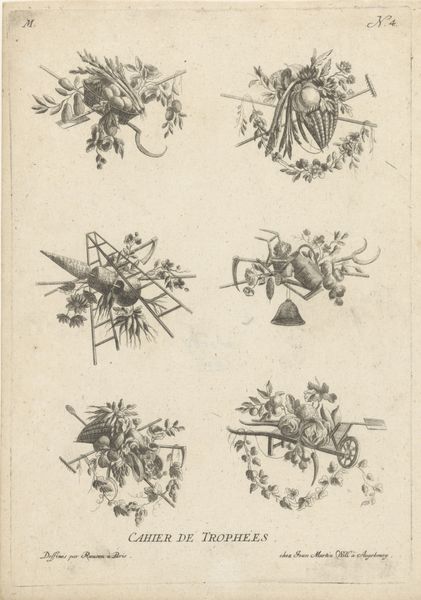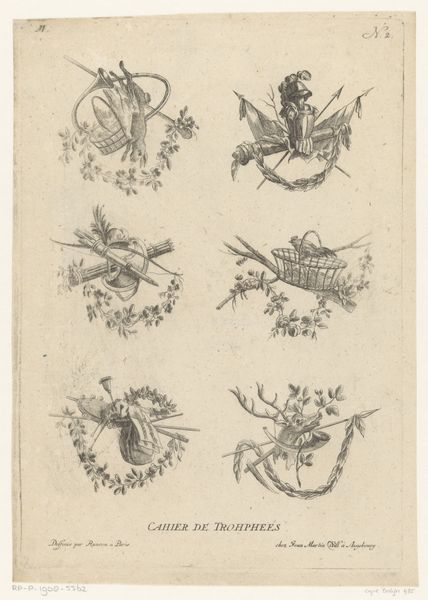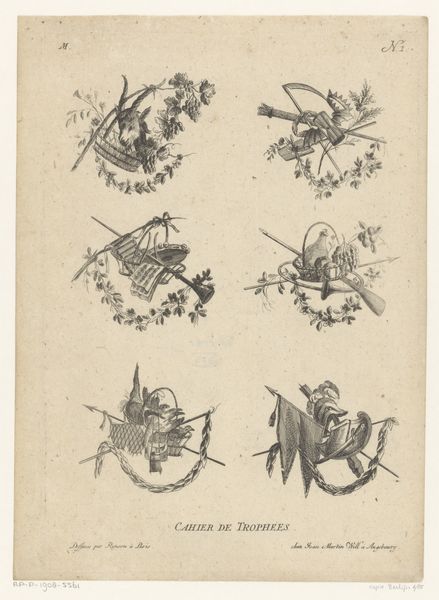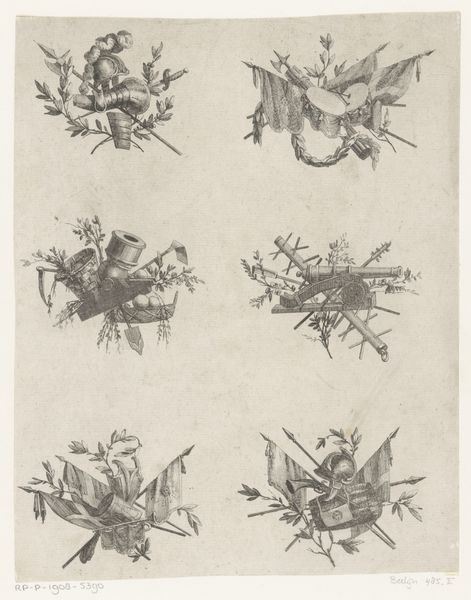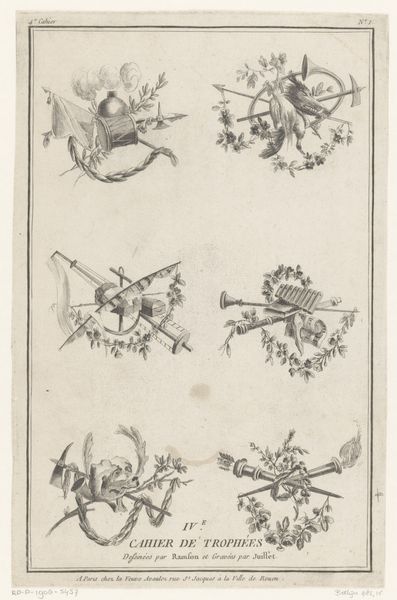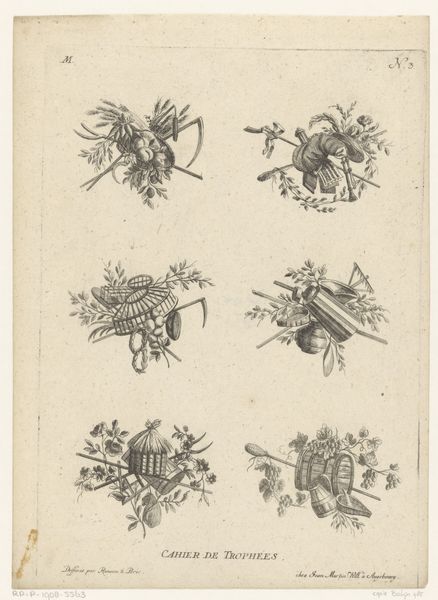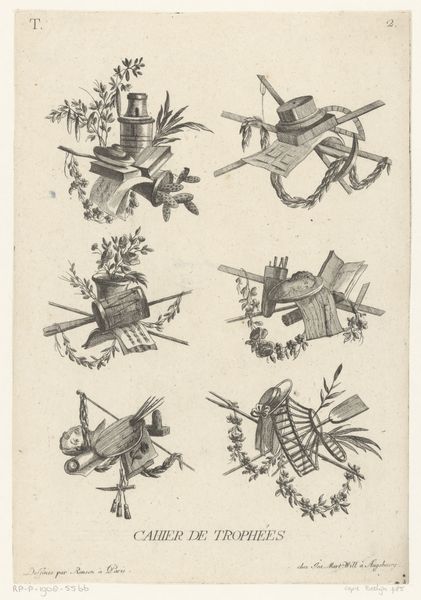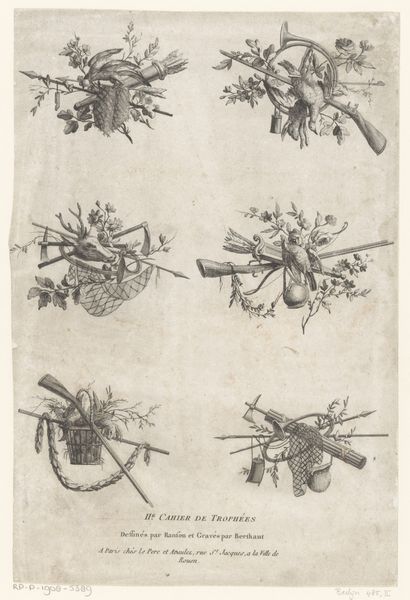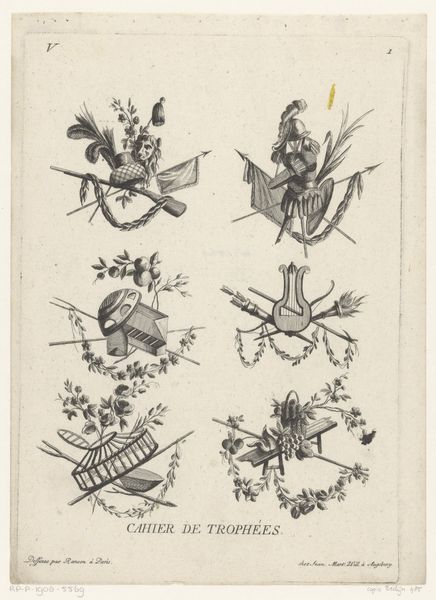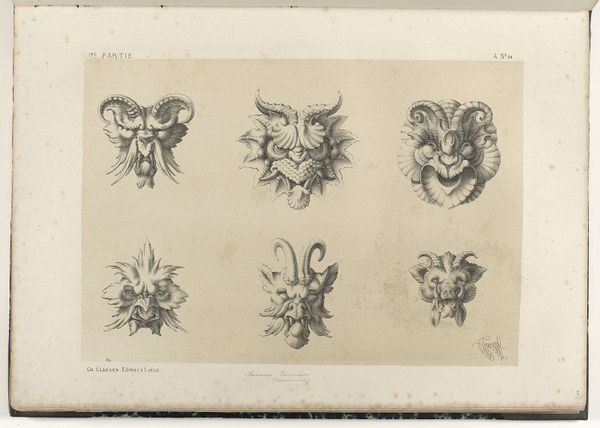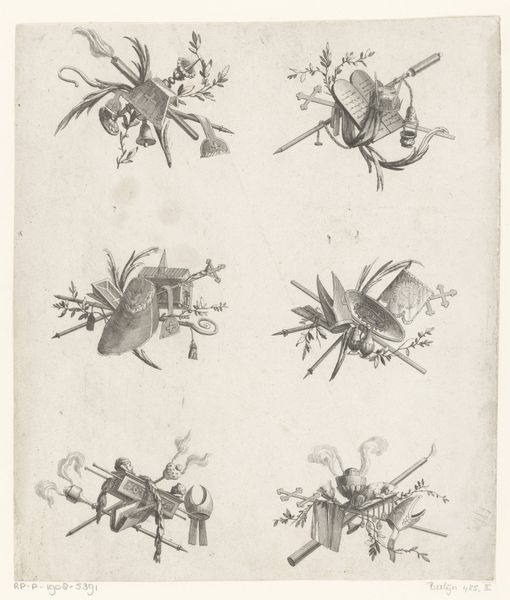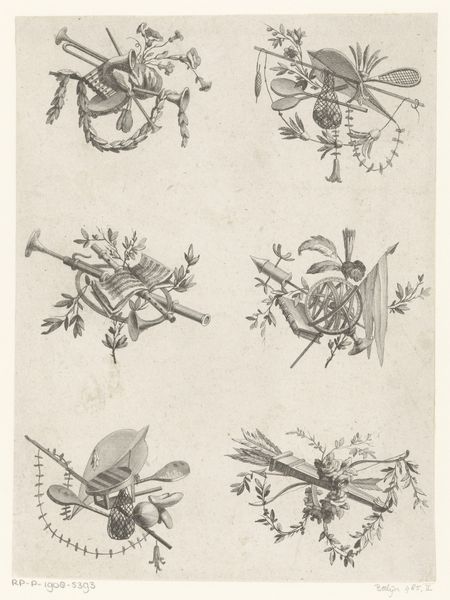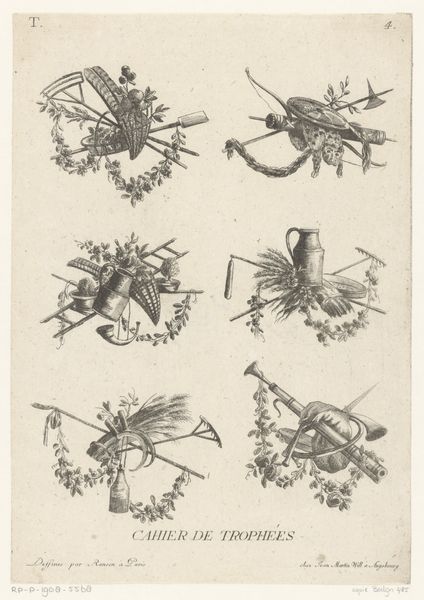
print, etching
#
baroque
# print
#
etching
#
geometric
#
line
#
decorative-art
Dimensions: 283 mm (height) x 165 mm (width) (plademaal)
Editor: We're looking at "Fem slutvignetter" by Johanna Sibylla Küsel, made sometime between 1650 and 1717. It’s a print, an etching, with five different decorative vignettes. They have this heraldic quality. I find the detail amazing considering it's all etching. What strikes you about it? Curator: Well, given my perspective, I'm immediately drawn to the labor and material conditions inherent in producing these kinds of prints. Consider the time and skill involved in etching these intricate designs. The artist wasn't just creating images; she was engaged in a meticulous process. Think about who commissioned this, the intended audience, and the function of these images in early printed materials. Were they primarily decorative or did they signify something more about power and consumption? Editor: That's interesting. I was just thinking about the aesthetic, but the "who" and "why" behind the art makes a big difference. What was the typical production context for etchings like these? Curator: In the Baroque era, printmaking was a key industry. Etchings were produced in workshops, sometimes collaboratively. Küsel's gender further complicates this. How did she access the materials and training required? Were these prints sold individually, or were they integrated into larger publications? Did she have access to patronage that male artists might have enjoyed more readily? Editor: So you’re saying the piece isn't just about the images themselves, but about the systems that allowed them to be created? Curator: Precisely. And that it opens avenues for questions about labor, gender, and the role of prints within the broader economy. The availability of the paper, the ink... these are rarely considered "artistic" choices, but they fundamentally shape what we see. Editor: That gives me a totally different appreciation for the piece! It's not just about decorative art, but about understanding the process of how it was made, its production context, and what materials enabled its creation. Curator: Indeed. By looking at the material conditions, we start to see these images as products of complex social and economic networks, not just expressions of individual artistic genius.
Comments
No comments
Be the first to comment and join the conversation on the ultimate creative platform.
